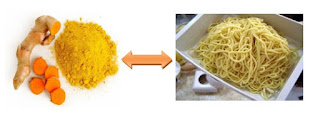Teeth is one important organ in the digestive system in the human body , whose function is used to chew food before it goes into the digestive tract. If a tooth is impaired, it will be disturbed digestion process that can interfere with daily human activities, thus indirectly play a role in the health status of individuals. Dental disease that is often suffered by almost all of Indonesia's population is dental caries and periodontal disease. Dental caries is a disease that is often found in every social strata of Indonesian society both in men and women as well as children and adults. The second major cause of disease is due to the accumulation of plaque that constantly not cleaned. Public ignorance about the dental plaque to lack of awareness for maintaining healthy teeth and mouth (Awang, 2014).
Dental plaque or plaque is a soft deposit in the form of a thin layer or commonly referred to as a biofilm attached to the tooth surface or other hard surface structures in the oral cavity including the removable or fixed restorations. Plaque is different from other deposits contained in the oral cavity as material alba and calculus. Alba is a soft material accumulation of bacteria and tissue cells whose structure is not as plaques and easily removed with water spray. Calculus is a hard deposit that forms on the remineralization of dental plaque and are generally coated with plaque that is not eliminated (Carranza et al, 2002).

Plaque control is the effort to prevent the buildup of plaque . Such efforts can be done mechanically or chemically . One means of prevention is chemically plaque is to use mouthwash. Some chemical substances in the mouthwash has antiseptic and antibacterial properties that are useful for inhibiting the formation of plaque and gingivitis prevention (Houwink 1993 cit. Paramitha, 2011). Antibacterial compounds that are needed to help eliminate inflammation by inhibiting the growth of bacteria and decrease the concentration of bacteria in dental plaque (Klokkevold and Mealey, 2006).

Lime plant belonging to Rutaceae tribe has a multitude of uses in human life, especially as beverage ingredients and traditional medicine. Based on experience, lemon juice can cure cough. In addition to fruit, lemon rind also have utility as in the lemon rind contains essential oils. In everyday use liquid fruit is used to give a sour taste in various dishes. The leaves can be used as a condiment on fried side dishes of meat. The outer skin lemon essential oil can be taken that are used as ingredients and almost the entire food industry, beverages, soaps, cosmetics and perfumes using essential oils bit as fragrances and can also be used as an antirheumatic, antiseptic, detoxifying, astringent, antibacterial, diuretic, antipyretic, antihypertensive, antifungal, insecticide, tonic, antiviral, expectorant (Agusta 2000). Essential oils have antibacterial functions against some bacteria such as Staphylococcus aureus, Bacillus cereus, Salmonella typhi and Candida albicans group (Awang, 2014).
Lime (Citrus aurantifolia) is one of the toga plant that is in use in the community, both for seasoning or for drugs from the juice of citrus fruits nipisnya water. Lime juice can be used as a mouthwash in patients with sore throat, can overcome bad breath odors because the fragrance of the fruit skin and resolve inflammation. Citrus fruit juice contains elements of chemical compounds that are useful include citric acid, fatty resin, glycosides, minerals, vitamins B1, essential oil. 7% essential oil containing citrate, limonene, fellandren, lemon camphor, geranil acetate, cadinen, linalin acetate, flavonoids, such as poncirin, hesperidine , rhoifolin, and naringin (Guo et al., 2006 cit. Anna 2012). Antibacterial activity of essential oils of lemon caused by the presence of phenolic compounds and their derivatives and the acid content of 7 to 7,6 %, which can denature bacterial cell protein (Anna, 2012).
Source :
Awang, Messyliana. 2014. Pengaruh Berkumur Larutan Air Perasan Jeruk Nipis (Citrus aurantifolia) terhadap Akumulasi Plak. Skripsi Sarjana Kedokteran Gigi. Universitas Mahasaraswati Denpasar.
Agusta, A. 2000. Minyak Atsiri Tumbuhan Tropik Indonesia, ITB., Bandung.
Anna Karina. 2012. Khasiat dan Manfaat Jeruk Nipis. Ed. ke-1. Stomata. Surabaya.
Carranza, FA., Newman, MG., Takei, HH. 2002. Clinical Periodontology. Ed. Ke-9, W.B. Saunders Company., Philadelphia.
Klokkevold, P.R. dan Mealey, B.L. 2006. Influence of Systemic Disorders and Stress on the Periodontium. Dalam Carranza’s Clinical Periodontology, Newman MG, Takei HH, Klokkevold PR, Carranza FAJr. (ed.), Ed. ke-10, Saunders., St.Louis. hlm. 284-311.
Paramitha, A. 2011, November 20-last update, Pengaruh Pemberian Larutan Ekstrak Siwak (Salvadora Persica) Terhadap Pembentukan Plak Gigi. [Homepage ofeprints.undip.ac.id], [Online]. Available: http://eprints.undip.ac.id/37057/1/Paramitha_A.pdf [18 Juli 2013].





Comments
Post a Comment